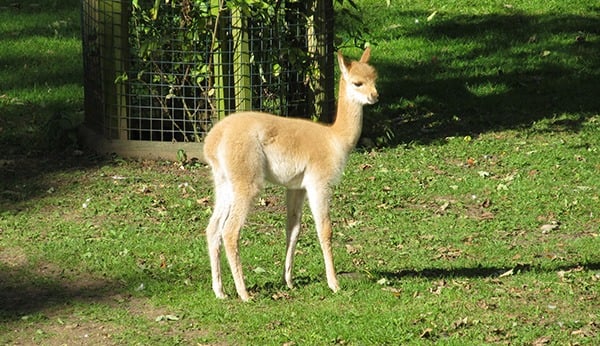Valerie the Vicuna turns one!

You may remember last year we announced the arrival of a baby vicuna (Vicugna vicugna), also known as a cria. At the time of writing the sex of the cria was unknown but a little while later the infant was sexed as a female and she was named Valerie. Born on 15th September 2016 it means Valerie has just celebrated her 1st birthday!
Here at Flamingo Land our vicunas are involved in a European Endangered Species Programme (EEP) which manages individual animals of a species and encourages the conservation and breeding of them. Now Valerie is one year old she will soon be moved onto another zoo in Europe where she will join other vicuna and hopefully someday have offspring herself.
The vicuna used to be a common species but since the 1500s, after the Spanish conquest, their numbers were reduced to around 10,000 by the 1960s, making it one of the most threatened species in South America. This prompted conservationists to set up breeding programmes to increase their numbers and conservation areas to help protect them from poachers. This has proven to be successful as there are now over 300,000 found within South America and they are classed as being least concern by the IUCN Red List of Threatened Species. These efforts need to continue as vicuna are still poached for their wool and face other threats such as the deterioration of grasslands along with climate change.
Vicunas belong to the camelid family along with camels, alpacas, llamas and guanacos. It is thought that the vicuna is a wild ancestor of the alpaca. They have a long neck and legs and feet which are able to grip onto rocks and gravel. They have brown fur on their backs and white on their fronts. A general group in the wild consists of a dominant male, several females and their young. The male defends two separate territories; one used for sleeping at a high altitude and a lower one for grazing on the grass during the day. The male also looks out for predators and gives out a whistling call to notify the rest of the group and helps to defend them. If they decide to flee they can reach speeds of around 50 kilometres an hour!


